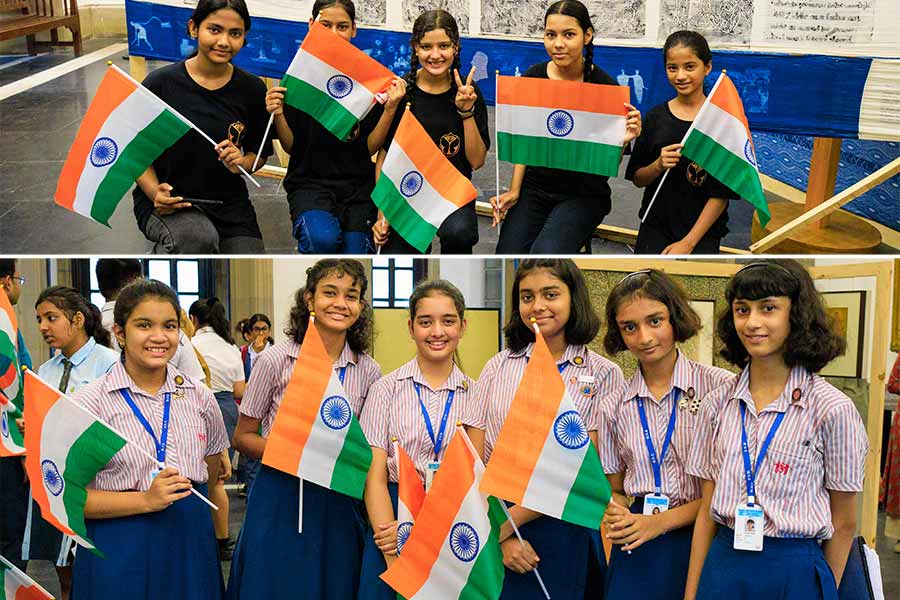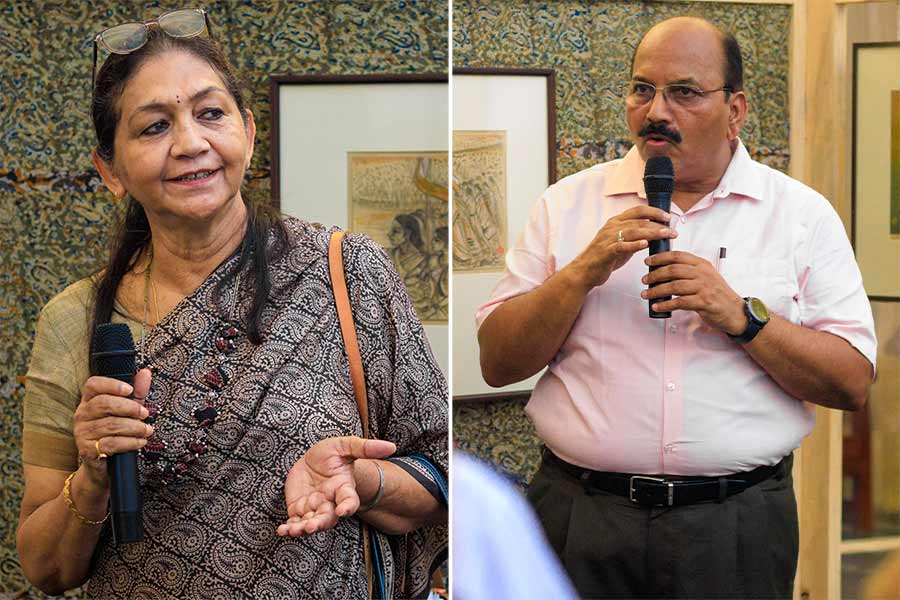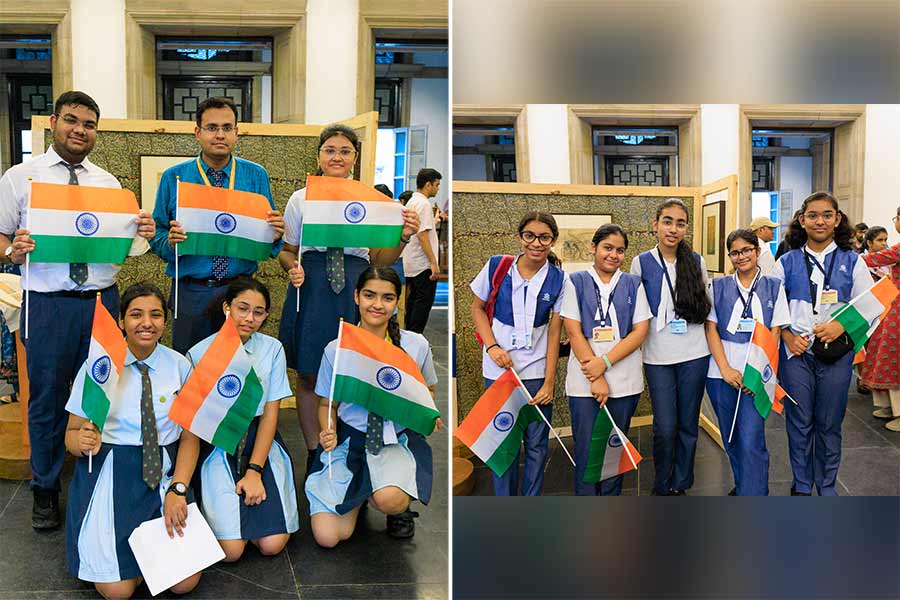Is learning about memorising information, or questioning the world? This is the question that has encouraged DAG to partner with Victoria Memorial Hall and four city schools to create a pop-up installation titled ‘Fabric of Freedom’, from August 13 to 18, at the monument’s newly opened Great Indian Reformers Gallery.
Twenty young learners from Ek Tara Learning Centre, Lakshmipat Singhania Academy, Modern High School for Girls and South City International School spent a week engaging with historical artworks from the DAG collection and interpreted contemporary textiles in order to explore the intersection between fabric, colonialism and freedom. This was a part of the ‘Har Ghar Tiranga’ campaign.
The pop up comprises a unifying charkha, from which emanate four different scrolls, each telling a unique story of the freedom movement, crafted by the student’s imagination. These scrolls signify how traditional artists from regions like Bengal, Odisha, Gujarat and Maharashtra painted stories of resistance on scrolls. The students based their research upon DAG’s artwork collection and developed these stories by putting themselves in the shoes of the characters within the artworks. Emphasis was laid on deeply engaging with the feelings and thoughts harboured by these individuals.
This resulted in a riveting reimagination of the life of a silk-weaving family in Thanjavur, and how they were affected by the Industrial Revolution in Britain, eventually being forced to shut down their looms. The students also prepared a scroll on the Indigo Revolution through the cyanotype technique, depicting the struggles faced by farmers after the imposition of the indigo cultivation law by the British in 1859. Another scroll explored how Abanindranath Tagore’s Bharat Mata painting inspired Hindus and Muslims to unite through Raksha Bandhan during the Bengal Partition. Finally, the students also used natural colours to depict the Santhal rebellion in Jharkhand and Bengal through the eyes of Sumi Murmu, who left her family to train with her husband Sidhu, ultimately training other women from her tribe to join the fight.
“Piecing together the story of an Indian weaver, whose work was snatched by the Industrial Revolution, made us realise the harsh working conditions they faced and how defeated they felt. Carving out this story through the Linocut method was a great experience,” said Dalini Mehta, a Class IX student of LSA. Sneham Paul, a Class IX student from South City International also expressed how this was a superior learning method, compared to the mundanity of mugging up textbooks. “Instead of rote-learning a topic I was familiar with, I got to create a Cyanotype through cut-outs of silhouettes and paste them on OHP sheets.”

The participating students from (top) Ek Tara Learning Centre and (below) Modern High School for Girls
The event’s chief guest, art educator Anita Chakraborty was amazed by the insights that the students had arrived at. “The children have worked very hard, and the detail in their research is fantastic. We must engage more school children in projects like these,” she said. Samarendra Kumar, the secretary and curator of Victoria Memorial Hall, also expressed his delight at the endeavour. “This building we stand in today is a monument for Indians, by Indians. The children haven’t just gained knowledge today, but understood the feeling of our great nation,” he added.

Art educator Anita Chakraborty, and secretary and curator of Victoria Memorial Hall, Samarendra Kumar
Sumona Chakravarty, vice-president of museums at DAG, revealed that DAG’s vision since 2021 has been to take their art collection to schools and incorporate it in their curriculum. “Textbooks tell you what to learn, but art allows learning to become student-led, giving room for internal questions and deeper engagement. We wanted the students to examine the freedom movement from the perspective of ordinary people, by thinking from their perspective,” she said.

Students from (left) South City International School and (right) Lakshmipat Singhania Academy
